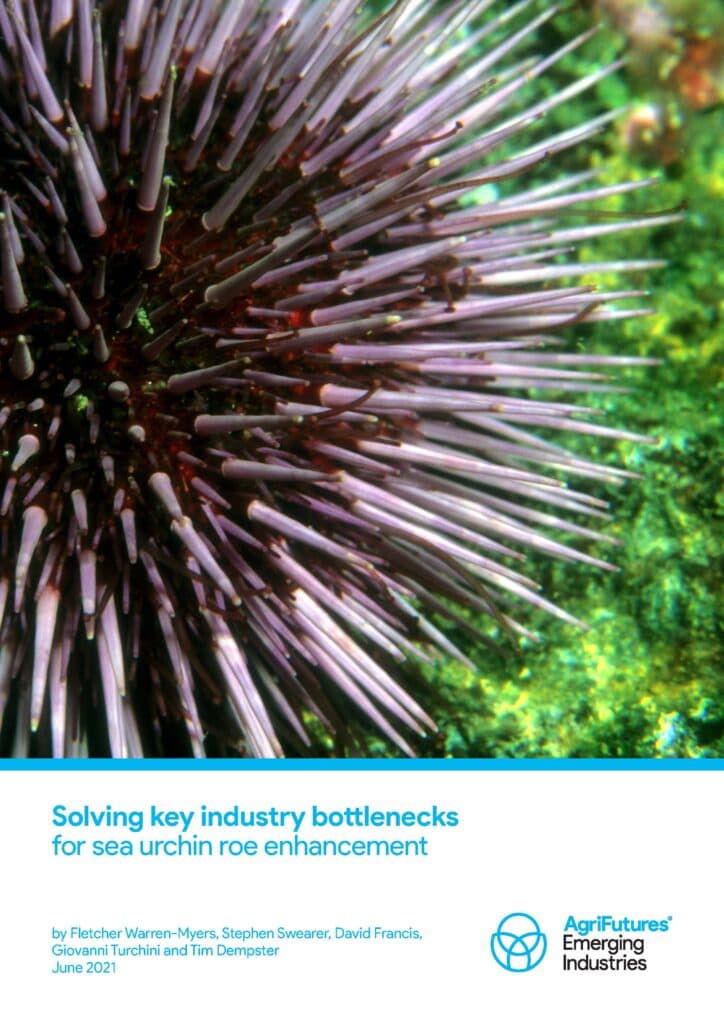The decline in sea urchin fisheries production has seen increasing interest in the commercial culture of sea urchins. The research presented in this report is important because the diversification of the Australian aquaculture industry into sea urchin aquaculture depends on the development of novel culture methods (ranching or propagating). This report helps the establishment of efficient collecting methods and optimal feeds for maximising gonad growth and production for Heliocidaris erythrogramma which is essential for the development of an urchin roe enhancement aquaculture industry for this species.
The temperate purple sea urchin Heliocidaris erythrogramma occurs in high densities on urchin barrens in Port Phillip Bay (PPB), Victoria, and has roe (gonad) of unique taste and high market value. However, urchins from the barrens are often low roe quantity and quality mainly due to starvation. Creating an economic driver that results in the removal of urchins from barrens, by making each urchin valuable through roe enhancement aquaculture, could be a cost-effective way to reduce urchin abundances and enable the re-establishment of macro algal dominated reefs. Short-term roe enhancement of these urchins to make them marketable could be a valuable addition to Australian aquaculture and help reduce the spread of urchin barrens in PPB. Any commercial entity interested in the modelling the economic viability of roe enhancement of H. erythrogramma will benefit from the research presented here.
This report demonstrates that H. erythrogramma can be rapidly collected on scuba (~2000 urchins per diver per day) and transported to onshore enhancement facilities with minimal losses (<2%) when collected from waters of a temperature below 18 °C. The optimal feed type found to produce high gonad indices in urchins collected from barrens during the autumn-winter-spring period contained a combination of medium protein, low lipid combined with a simple carbohydrate.
The addition of non-seaweed additives to the optimal feed was found to improve the visual quality and taste of urchin roe when roe enhanced during the autumn-winter period. However non-seaweed additives were less effective during the winter-spring enhancement period, mainly due to an overriding seasonal effect that resulted in improved quality of roe in general from all urchins when roe enhanced during the winter-spring period.





